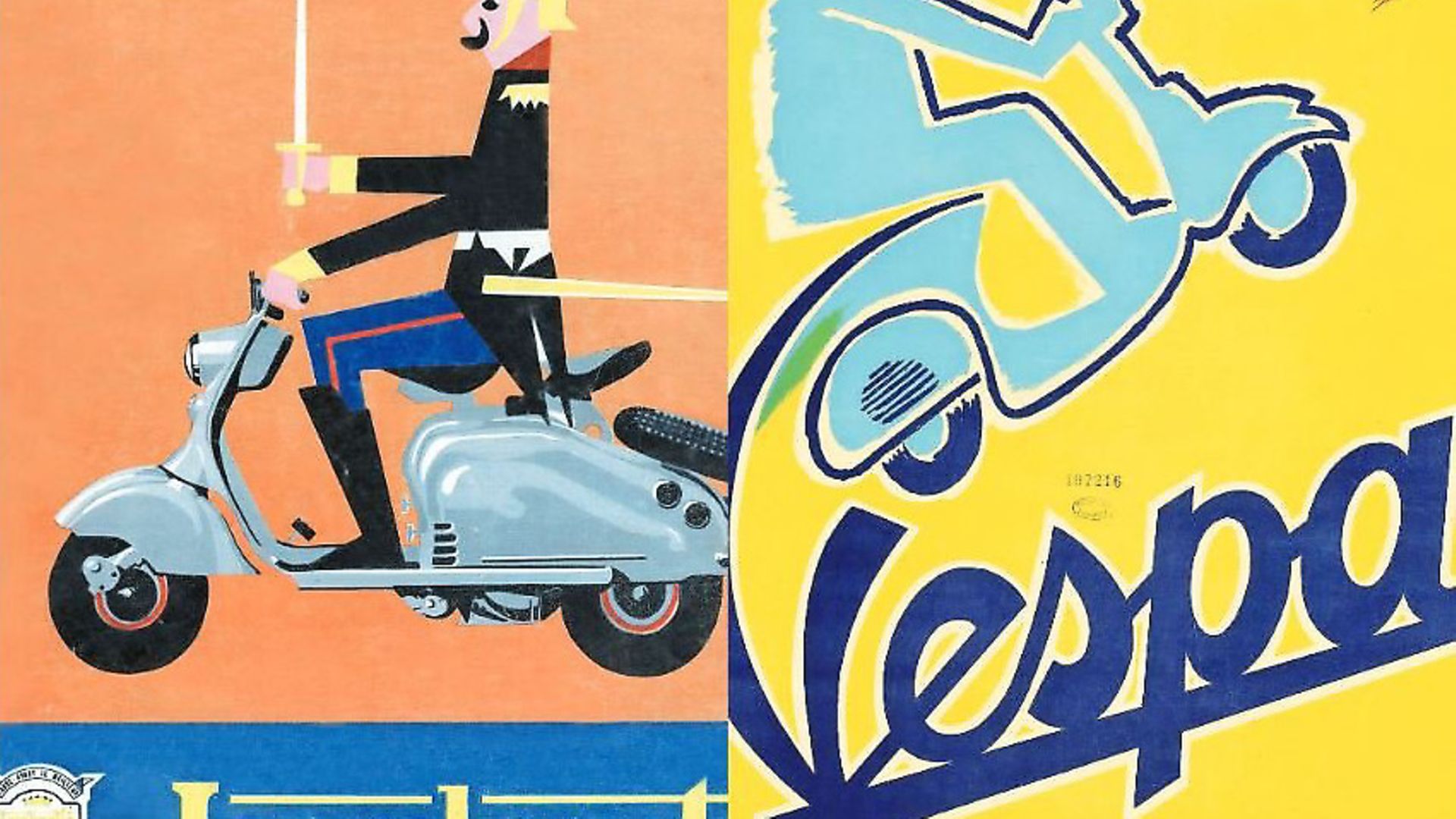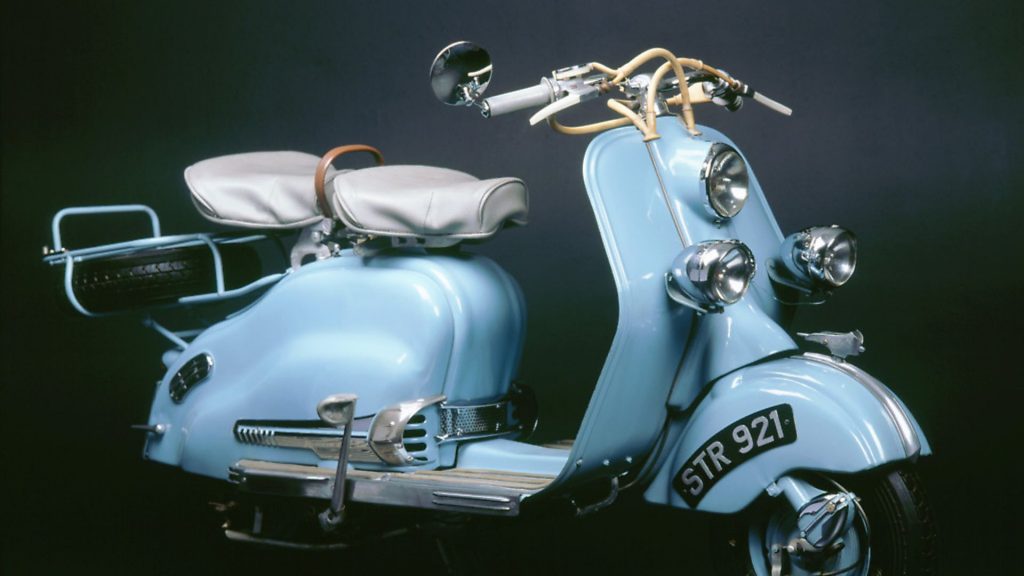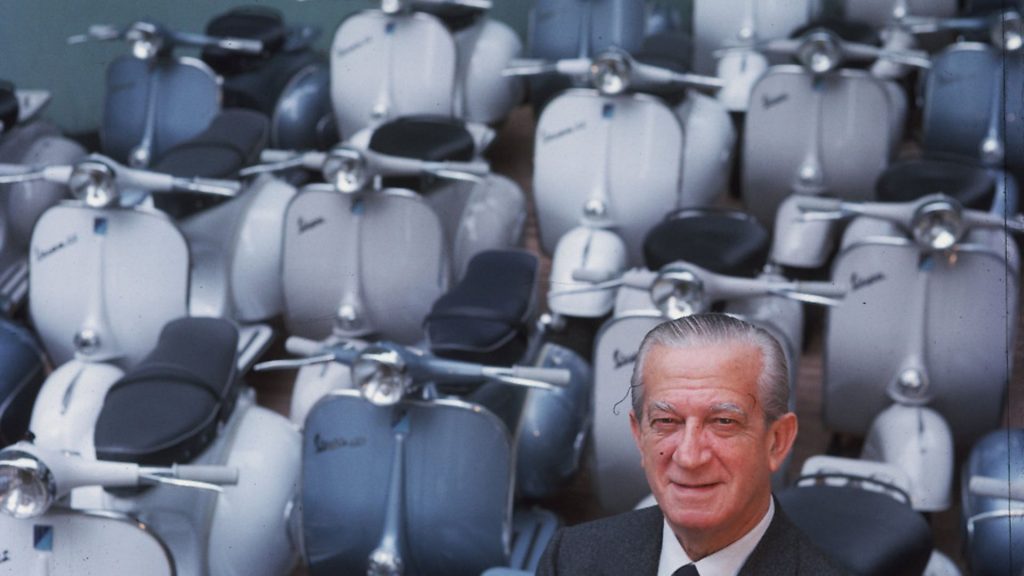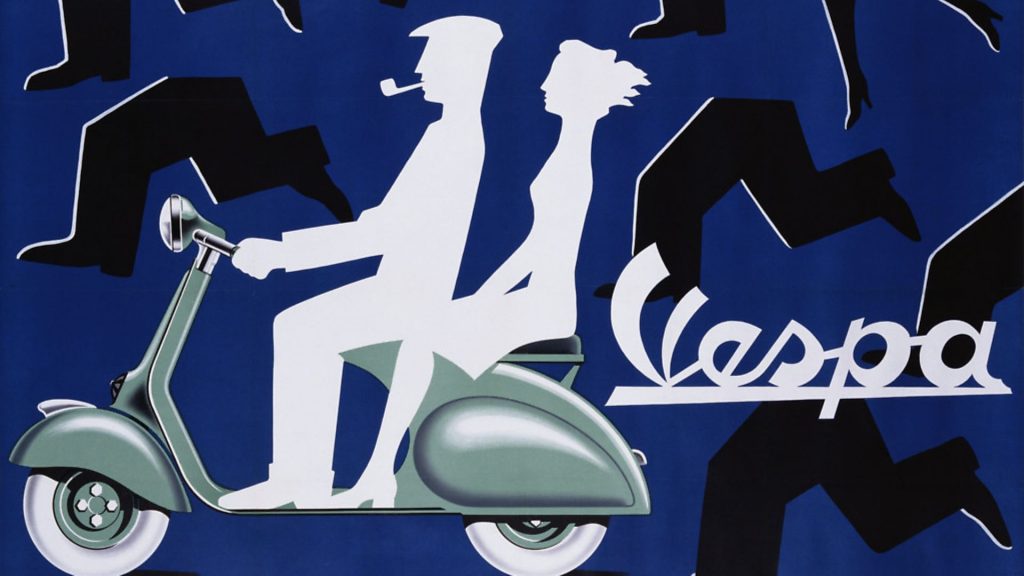
The Vespa and Lambretta are both characterised by style, beauty and the promise of freedom. But they have divided the world into two equally fanatical set of followers.

Vespa or Lambretta. You’re not really allowed to be a fan of both. Like the Beatles or the Stones, red or white wine, City or United, the two different types of scooter somehow define the personality of those who ride them.
Both have been busy celebrating their 70th anniversary (Vespa last year, Lambretta this year), and both companies have become international symbols of post-war Italian design, of the country’s economic growth and recovery, of a new consumerism, of confidence, style and flamboyance. But as much as a shared history, there’s also a keen rivalry, an inevitable north-south divide (this is Italy, after all) and, in more recent years, a renewed wave of interest and appreciation.
Piaggio, creators of the Vespa, are based in Pontedera, a small town near Pisa, Tuscany. An established weapons manufacture through the 1930s and during the Second World War, its factory was a regular target of Allied bombing raids. After the war, Enrico Piaggio, son of the company founder, wanted to design a small, cheap mode of two-wheel transport, based on a similar bike used by the Italian military, and ideal for a country whose infrastructure and road systems were still buried under rubble.
Further north, in Milan, pretty much the same thing was happening in the city’s Lambrate suburb. The Innocenti company had also been hit hard by wartime aerial bombardments and its founder, Ferdinando Innocenti, had also come up with a proposal for creating his own bike, this one based on the US Army’s Cushman scooter. Innocenti hired Corradino D’Ascanio, a highly experienced aeronautical designer, to work on his plans. However, D’Ascanio grew increasingly miffed at Innocenti’s interfering and took his designs off to Piaggio.

The first Piaggio effort, the Paperino (after the Italian name for Donald Duck), was deemed too ugly and quickly scrapped. D’Ascanio unfurled the plans he had drawn up for Innocenti, made a few adjustments and came up with a totally new model, with beautiful curves and a neat, compact shape that still protected the rider from the elements and was large enough to comfortably take on a passenger. Piaggio dashed off to get it patented. The Vespa (‘wasp’) was one of the great examples of form-meets-function Italian creativity, as revolutionary as it was elegant. Originally intended to be a low-cost, utilitarian stopgap, it was also brilliant fun. And it was an immediate success.
In Milan, Innocenti’s now stalled scooter was still a year away. Named after the area where the factory was based, when the Lambretta finally appeared it was a more robust version of the Vespa, a little more businesslike. With better steering and the engine in a central position, it had a technical edge, more sporty and powerful (and a little more expensive).
Pretty much from the get go, the Lambretta was seen as a workhorse, the Vespa a family pet. It was all about style versus power. Vespas were bright and breezy, a little more free and easy, to the extent where even coming off the thing was seen as all part of the charm. They became big hits in the south of the country, ideal for the climate and al fresco culture. Lambrettas were a northern thing; more serious, there to do a job of work rather than get any fun on. There were tales of Vespa and Lambretta riders challenging each other to races whenever they came across each other at a set of traffic lights. Whatever scootering option was taken, soon the whole country was mobilised.
Within a few years, the two companies were importing their respective scooters across Europe, where the rivalry between the two sets of drivers was no less intense. Audrey Hepburn and Gregory Peck had given Piaggio a huge profile boost after touring around the Italian capital on a Vespa in the hit film Roman Holiday. Hollywood stars working in Italy would pose for the obligatory publicity shot on a scooter.

People across the continent became obsessed with these new Italian arrivals, the Vespa in particular. In 1951, an Italian student, Giancarlo Tironi, rode his to the Arctic Circle. The following year, a Frenchman, Georges Monneret, created an amphibian Vespa and crossed the Channel in it. Two Spaniards rode from Madrid to Athens on a Vespa decorated by Salvador Dali. Another Italian made it from Genoa to Lapland and back on his Vespa in 12 days.
In the UK, there were Lambretta and Vespa owners’ clubs from the mid-1950s, with monthly magazines/newsletters sent out to members (Vespa News and Lambretta Leader). Clubs had (quite magnificent) names like the Mitcham Goons and the Bromley Innocents; there were rallies with crowds of scooter riders converging on seaside towns. And all this was happening the best part of a decade before the mods started having their own Bank Holiday scootering beanos.
When the first wave of mods began to appear on Soho streets in the late 1950s, they didn’t really go in for quite the same fierce Vespa-Lambretta divide. Scooters in general were a symbol of youth, of freedom and euro glamour, whatever make they happened to be, but they were mainly seen as highly practical. Zipping around central London between coffee bars, clothes shops and jazz clubs fitted the whole mod mood perfectly. The next generation of mod, during the early 1960s, was far more obsessed with their rides, accessorising and personalising them as individual expressions of themselves, as much as the clothes they wore or the music they danced to. And besides, by then there was little time for inter-factional rivalries with the constant threat of rumbles with leather-clad ton-up rockers.
By the mid-1960s, Lambretta sales were falling behind those of Vespa. Italians saw the Milan-based brand as being for an older generation, the sort of scooter your dad would ride to work on. Innocenti had really only just settled on a definitive design style (the Li series) and too much tinkering during the previous decade had done little help its cause. Not that Piaggio was doing particularly brilliantly by this stage either, but they at least had the support of Fiat to give it an extra nudge through lean times.

Rather ironically so, given that it was the Turin motoring giant who was partly responsible for the two scooter manufacturers suffering drops in sales. The Fiat 500 and 600 cars had found an obvious market in the scooting generation, ready to change up to four wheels. Chasing the youth market, Lambretta introduced a 50cc model, which became a massive flop. In the late 1960s, the company was bought by BMC (the British Motor Corporation), who then sold it to Scooters of India.
Eddie Piller, doyen of the late 1970s mod revival, music promoter and founder of Acid Jazz records, always found the Lambretta a bit of a problem reliability-wise, an all too common gripe among modern-day scooter riders. ‘I switched to Vespa in the early 1980s after my fourth Lambretta. Much as I admired the shape, style and profile of them, I was a motorcycle messenger for a record company and the reliability, mainly the starting of them, was causing me lots of grief.
‘I tried a new GP in the hope that would improve matters but if anything, the Indian build was worse than the old Italian or Serveta. I picked up a P Range Vespa quite cheap and never had a problem after that.’
With Lambretta now banished to the other side of the world, or stripped down beyond all recognition by army green-clad mid-1980s scooter boys, Vespa now had the market pretty much to itself. The Piaggio models rediscovered the hip cache in the 1990s, when Brit Poppers, actors and other celebs were papped scooting around various European cities on contemporary Vespas like the PX 125 T5 and, in more recent years, the hugely popular LX 150 (you may not know the name, but you’ll have seen them parked up in town centres absolutely everywhere). Riding around on a Vespa was no longer necessarily about youth, and certainly not about youth cults. You could be comfortably into middle-age, but having a Vespa was now shorthand for someone who was a bit of a creative, had a bit of flair about them, even if they were mortgaged up to the hilt with 2.4 children.

Steve Grant of the Lambretta Club of Great Britain is understandably a little biased about these things, but he insists his preferred mode of transport has a definite edge on the Vespa. ‘Lambrettas always seemed so much cooler and more desirable to me. Plus all my mates wanted one. We were influenced by the film Quadrophenia and all the scooters just looked great.’ What about the reliability argument? ‘An old Lambretta is just as reliable as an old Vespa, but of course Piaggio continued to produce scooters, so obviously the newer ones are technically more advanced and so more reliable.’
Now Lambretta is back, sort of. In time for its 70th anniversary, there’s the new V-Special model, based on the classic GP 200 and SX 200 Lambrettas from the 1960s. The model comes courtesy of an Austrian design house called KISKA, rather than the original Italian marque. But no matter. The V-Special, nicknamed the Vendetta, was revealed recently to a general thumbs up from online Lamby lovers. Grant is a little more cautious in his appraisal: ‘It’s not a Lambretta in the true sense for me. It’s a bit like the new Mini. Whereas the new Vespas are more akin to the modern Fiat 500.’
Lambretta’s problem now though is that most potential customers who can afford a brand new, top-of-the-range scoot are more likely to go for the vintage option. It’s something Vespa found out a few years ago after it introduced its most expensive ever model, the 946. Back in the 1980s, you would hear tales of young mods spotting a rusting old Vespa in someone’s front garden, knocking on a front door and persuading an unsuspecting owner to part with their scooter for a knockdown price.
Those days have long gone. Anyone wanting to get hold of a fully restored 1960s model, of either make, will now need to part with the business end of £9,000. But plenty of people are. Piller shrugs. ‘Scooters will increase in value until our generation start dying off in significant numbers and bikes come back into the market in quantity. They really are a beautiful work of art with an awful lot of cultural baggage, so it was always going to happen…’
The relative rarity of Lambrettas has added to their allure, as has the reassurance of decent restoration jobs, vastly improving the scooters’ performance. Even Piller, a committed Vespa rider for decades, has recently changed horses. ‘I have just bought my first Lambretta for 33 years. A J125 Starstream from 1967. It’s really lovely to ride!’
Matt Barker is a magazine editor based in London – but always thinking of Italy
Warning: Illegal string offset 'link_id' in /mnt/storage/stage/www/wp-includes/bookmark.php on line 357
Notice: Trying to get property 'link_id' of non-object in /mnt/storage/stage/www/wp-includes/bookmark.php on line 37






